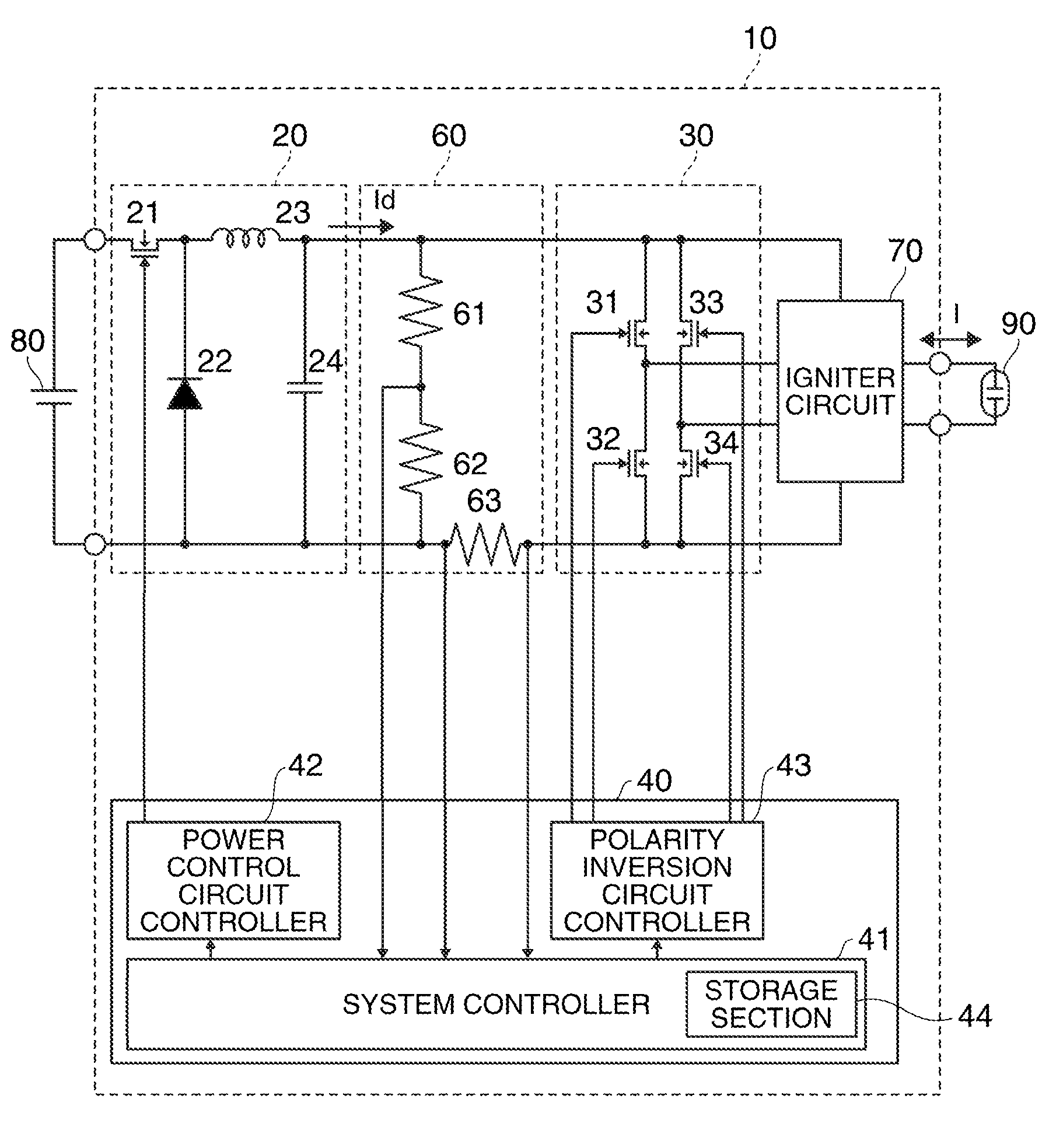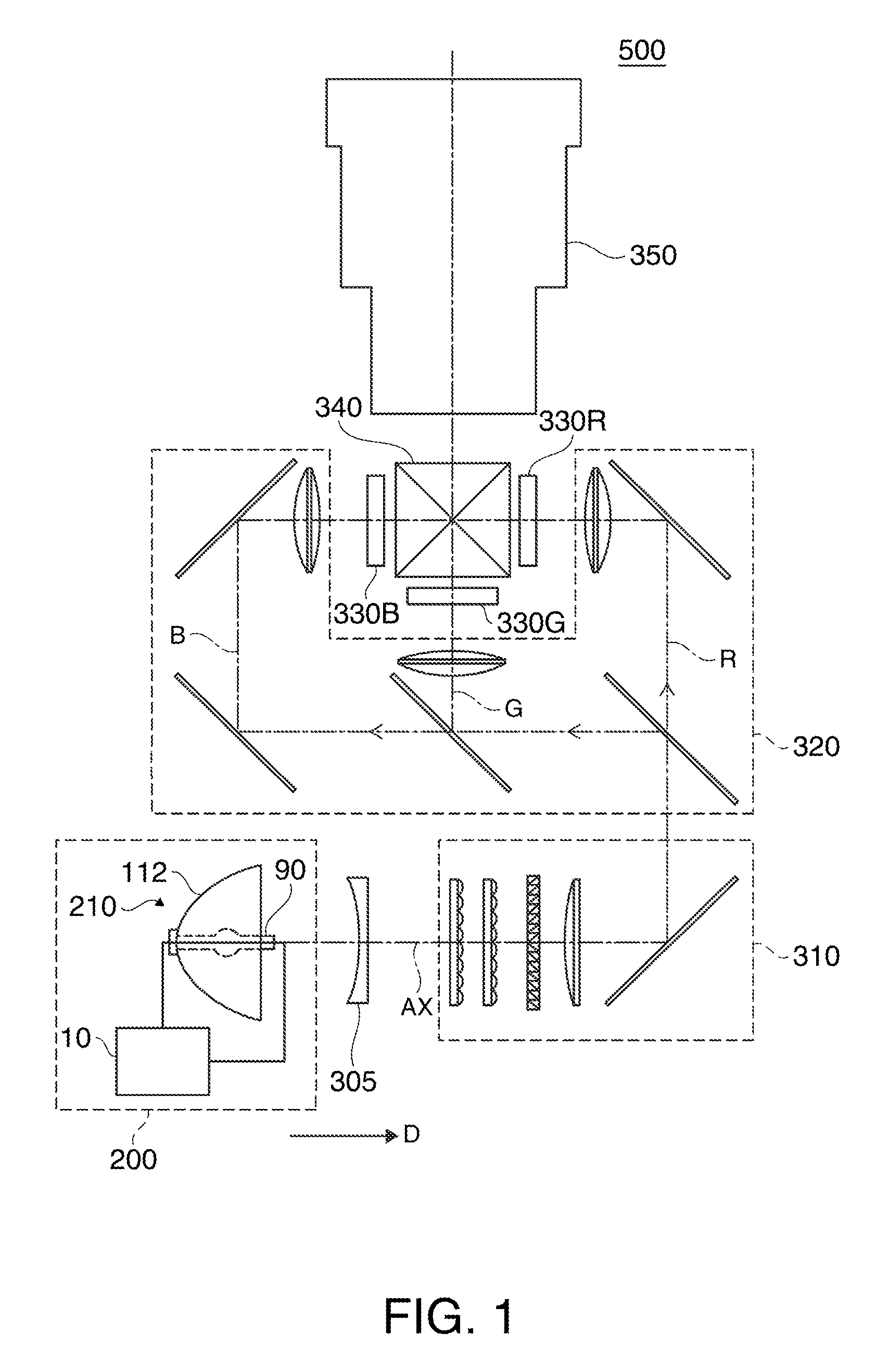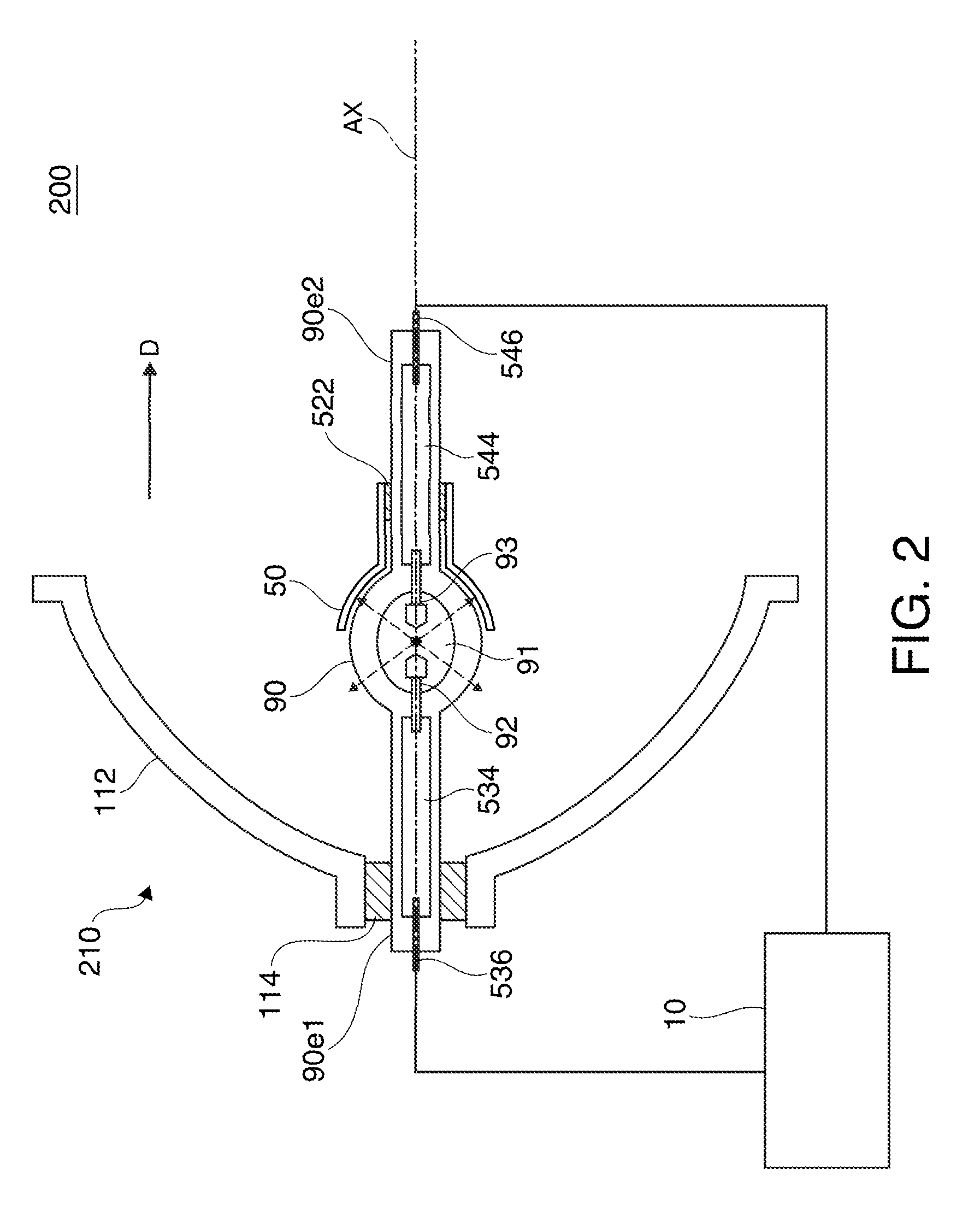Discharge lamp lighting device, projector, and driving method of discharge lamp
a technology of discharge lamp and lighting device, which is applied in the direction of instruments, light sources, projectors, etc., can solve the problems of excessive evaporation of electrode material from the electrode tip portion, unstable arc origin, and reduced life of discharge lamp
- Summary
- Abstract
- Description
- Claims
- Application Information
AI Technical Summary
Benefits of technology
Problems solved by technology
Method used
Image
Examples
first embodiment
2. Discharge Lamp Lighting Device
(1) Configuration of a Discharge Lamp Lighting Device
FIG. 3 shows an example of the circuit diagram of the discharge lamp lighting device according to the present embodiment.
The discharge lamp lighting device 10 includes a power control circuit 20. The power control circuit 20 generates driving electric power supplied to the discharge lamp 90. In the present embodiment, the power control circuit 20 is formed as a down chopper circuit to which power from a DC power supply 80 is input and from which a direct current Id is output after dropping the input voltage.
The power control circuit 20 may be configured to include a switching element 21, a diode 22, a coil 23, and a condenser 24. The switching element 21 may be formed by a transistor, for example. In the present embodiment, one end of the switching element 21 is connected to a positive voltage side of the DC power supply 80, and the other end is connected to a cathode terminal of the diode 22 and o...
second embodiment
3. Discharge Lamp Lighting Device
In the first embodiment, an example has been described in which the control unit 40 performs the first AC driving processing A1 at the fixed first frequency and performs the second AC driving processing A2 at the fixed second frequency. However, the control unit 40 may perform the first AC driving processing A1 and the second AC driving processing A2 by changing the first frequency in a first modulation pattern and changing the second frequency in a second modulation pattern different from the first modulation pattern.
FIGS. 8A and 8B are timing charts for explaining examples of the first and second modulation patterns. The vertical axis in FIG. 8A indicates the first frequency in the first modulation pattern, and the vertical axis in FIG. 8B indicates the second frequency in the second modulation pattern. In FIGS. 8A and 8B, the horizontal axis indicates a time. Moreover, when the driving current I is a direct current, the frequency is expressed as 0...
first modification
FIGS. 9A and 9B are timing charts for explaining other examples of the first and second modulation patterns. The vertical axis in FIG. 9A indicates the first frequency in the first modulation pattern, and the vertical axis in FIG. 9B indicates the second frequency in the second modulation pattern. In FIGS. 9A and 9B, the horizontal axis indicates a time. Moreover, when the driving current I is a direct current, the frequency is expressed as 0 Hz.
In the example shown in FIG. 9A, the first modulation pattern is a modulation pattern which includes periods b1-1, b1-2, b1-3, and b1-4, in each of which the first frequency is a fixed value, and in which a frequency-increasing change and a frequency-decreasing change are alternately repeated. In addition, the maximum value ΔF1 of a temporal change of the first frequency in the first modulation pattern is between the periods b1-1 and b1-2.
In the example shown in FIG. 9B, the second modulation pattern is a modulation pattern which includes pe...
PUM
 Login to View More
Login to View More Abstract
Description
Claims
Application Information
 Login to View More
Login to View More - R&D
- Intellectual Property
- Life Sciences
- Materials
- Tech Scout
- Unparalleled Data Quality
- Higher Quality Content
- 60% Fewer Hallucinations
Browse by: Latest US Patents, China's latest patents, Technical Efficacy Thesaurus, Application Domain, Technology Topic, Popular Technical Reports.
© 2025 PatSnap. All rights reserved.Legal|Privacy policy|Modern Slavery Act Transparency Statement|Sitemap|About US| Contact US: help@patsnap.com



